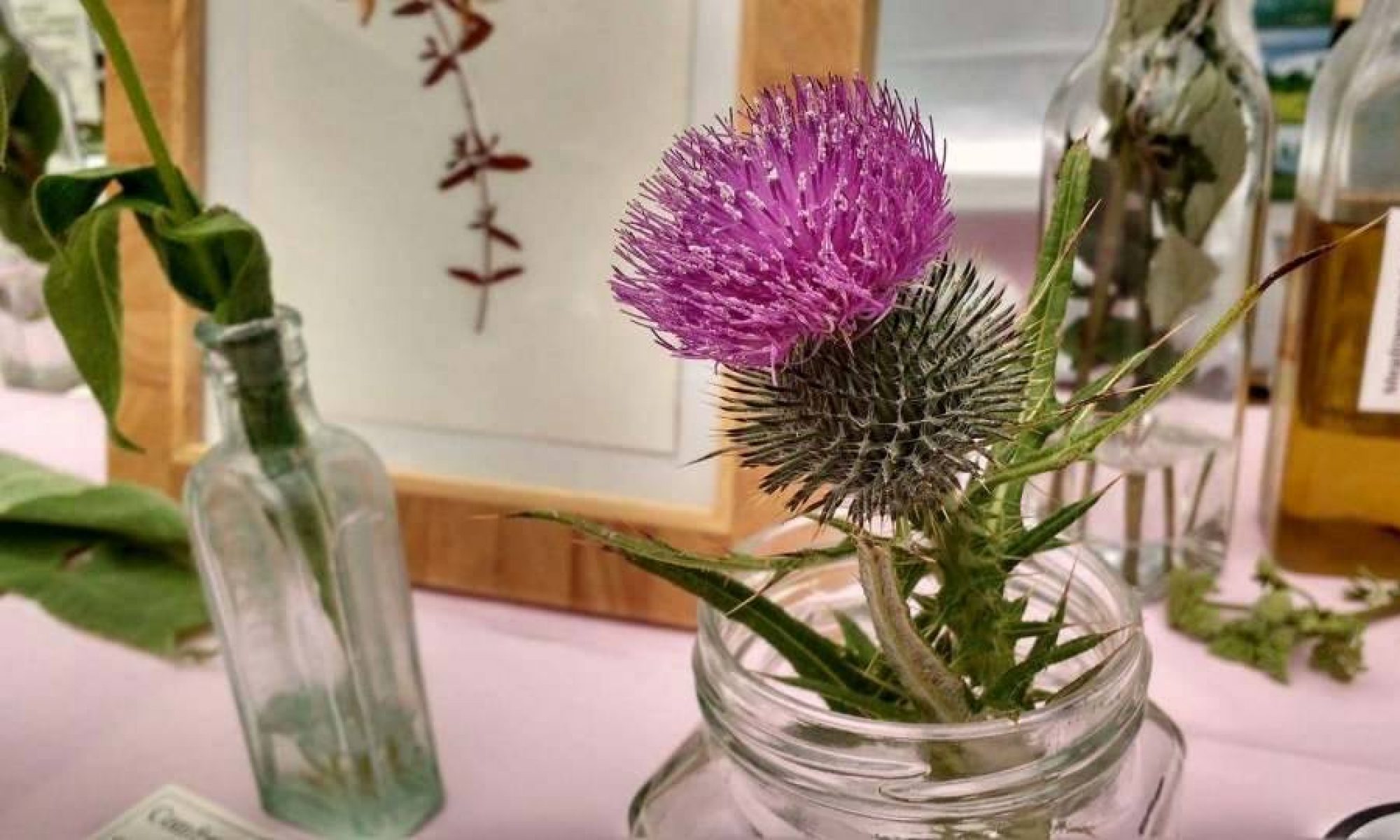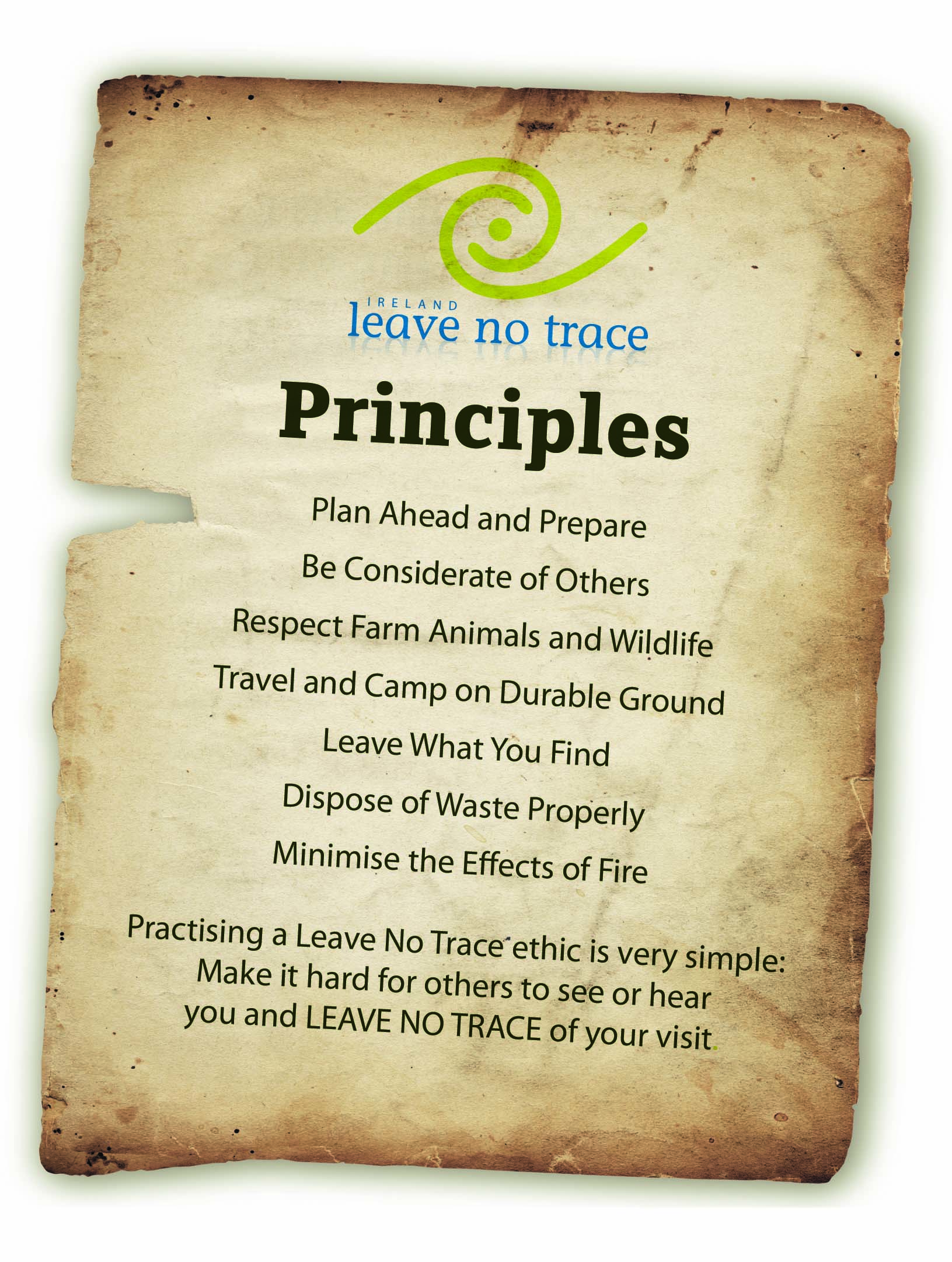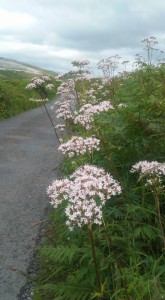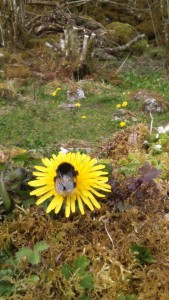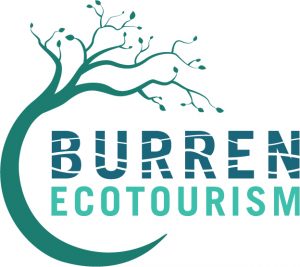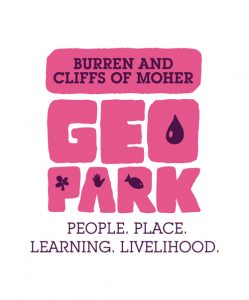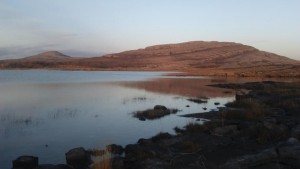 The Burren is a spectacular landscape encompassing 1500 hectares of rocky, breathtaking views that stretch and roll across Northwest Clare, edging into south Galway and falling away into the wild Atlantic ocean. In fact, the ocean has played a huge role in shaping and moulding the Burren and some of its oldest rocks were formed underwater in warm tropical seas 10 degrees south of the equator. When the earth moved, the Burren came to life. The vast surfaces of bare limestone that make up the Burren allow an impressive diversity of wildlife to grow and thrive. For example, wildflowers of arctic, alpine and Mediterranean origin can all be found growing, side by side in this unique environment. There is nothing more beautiful than strolling through the fresh pastures of the Burren allowing your senses to be tantalized by the lunar landscape, the aroma of wildflowers, and the sound of pure silence. Wild goat, birds of prey, butterflies, bees and pine martins can all be found living, roaming and dwelling throughout this untouched land. Magical lands breed magical people and the diversity of human nature is as rich as the natural environment itself. Traditional farmers, craftspeople, musicians, poets, artists, surfers and lovers of Nature can all be found living in community throughout the Burren but it is also home to many people from many countries that came to visit and could not leave. People have inhabited the Burren for 6000 years or more and the archaeological landscape coupled with historical records portrays a very visible and tangible history. In fact, one of the things I love most about the Burren is that the land lies untouched, as pure as it was in ancient times. The Old early Christian monasteries, the holy wells and their healing cures, the megalithic tombs, dolmens and underground caves are all still holding their ground, a living history, both visible and palpable. You feel your roots beneath your feet when you walk the land of the Burren. It is the ideal place to come to when you need to take time out and it is the perfect place to come to when you want to come home to yourself.
The Burren is a spectacular landscape encompassing 1500 hectares of rocky, breathtaking views that stretch and roll across Northwest Clare, edging into south Galway and falling away into the wild Atlantic ocean. In fact, the ocean has played a huge role in shaping and moulding the Burren and some of its oldest rocks were formed underwater in warm tropical seas 10 degrees south of the equator. When the earth moved, the Burren came to life. The vast surfaces of bare limestone that make up the Burren allow an impressive diversity of wildlife to grow and thrive. For example, wildflowers of arctic, alpine and Mediterranean origin can all be found growing, side by side in this unique environment. There is nothing more beautiful than strolling through the fresh pastures of the Burren allowing your senses to be tantalized by the lunar landscape, the aroma of wildflowers, and the sound of pure silence. Wild goat, birds of prey, butterflies, bees and pine martins can all be found living, roaming and dwelling throughout this untouched land. Magical lands breed magical people and the diversity of human nature is as rich as the natural environment itself. Traditional farmers, craftspeople, musicians, poets, artists, surfers and lovers of Nature can all be found living in community throughout the Burren but it is also home to many people from many countries that came to visit and could not leave. People have inhabited the Burren for 6000 years or more and the archaeological landscape coupled with historical records portrays a very visible and tangible history. In fact, one of the things I love most about the Burren is that the land lies untouched, as pure as it was in ancient times. The Old early Christian monasteries, the holy wells and their healing cures, the megalithic tombs, dolmens and underground caves are all still holding their ground, a living history, both visible and palpable. You feel your roots beneath your feet when you walk the land of the Burren. It is the ideal place to come to when you need to take time out and it is the perfect place to come to when you want to come home to yourself. 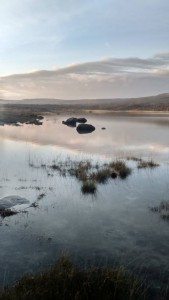
Find out more on the Natural Heritage of the Burren here.
Find out more about the flora and fauna of the Burren here.
Find out more about Archaeology in the Burren here.
Find out more about historical structures in the Burren here.
Things to do and experience in the Burren can be found here.
The Burren and Cliffs of Moher UNESCO Global Geopark
In 2011 the Burren and the Cliffs of Moher gained Global Geopark status, already spectacular neighbours, their coming together formed a destination of natural wonders. Making up over 530 square kilometres the Burren and Cliffs of Moher Geopark offer a diversity that is second to none. This rich and alluring landscape of staggering sea cliffs, limestone karst terraces, fertile valleys, vibrant villages and welcoming communities offers some truly inspiring experiences.
The Burren and Cliffs of Moher Geopark not only have outstanding natural and cultural heritage but a management organisation that supports its people and organisations to work together to ensure a cared-for landscape, a better-understood heritage, more sustainable tourism, a vibrant community and strengthened livelihoods.
More information on the Burren and Cliffs of Moher UNESCO Geopark can be found here.
Burren Ecotourism Network (BEN)
BEN is a network of local business people who live in or around the Burren and who adhere to The Burren and Cliffs of Moher Geopark code of practice. I am a member of the Burren Ecotourism Network. This means that I am committed to the promotion of responsible tourism that conserves the environment and improves the well being of local people. I am also committed to offering a rich, authentic experience to all visitors who come to spend time in this beautiful part of the world and I update my knowledge and training through workshops provided by the Burren Eco-tourism network.
More details on BEN can be found here.
Details on how to travel to Ireland and around the Burren in an eco-friendly way can be found here: http://www.burren.ie/getting-here/
Being a Herbalist I have an intricate relationship with the earth as it is the earth that grows my medicine. Coming home to this most basic fact is what has nurtured within me the deep respect that I now hold inside for the land and all that inhabit it. I put that respect into action by following some mindful foraging guidelines and adhering to the principles of ‘Leave no trace’ which promotes responsible outdoor recreation. Leave no trace principles
Things to consider while out foraging for wild herbs, plants or foods.
- When you pick a flower you are also taking the seed of that plant, which means that there is less potential for growth the following year. You need therefore to take into consideration how common the flower is. Plants such as daisy, dandelion, yarrow and meadowsweet for example grow in abundance and picking flowers should not pose a problem. Even still, it is never a good idea to pick a lot of flowers from the same spot. Instead, gather a few from here and a few from there. There should never be any visible signs left after foraging.
- Picking flowers from trees and shrubs such as elderflower, hawthorn flower and honeysuckle means that there will be no berries to follow in the Autumn time. Apart from also holding the seed, berries are a food source for wildlife such as birds who depend on them at that time of year. When birds eat berries, the seed is pooped out the other end along with the bird poo which is a perfect substrate for growing a new tree. Not so when humans eat them, unfortunately. When I forage hawthorn berries, elderberries, elderflowers or sloes, I see it as though I am giving the tree (or shrub) a haircut, trimming bits from here and there, never stripping it to bare.
- Consider the bees and other insects – if you see bees hovering in and out of flowers, then they are probably depending on that pollen for their daily activities. Many wild herbs such as meadowsweet are home to a multitude of insects. It would be kinder to shake the insects off in the spot where you pick the plant but failing that, leave the herbs out on your lawn for a while so that they have a chance to crawl off before the plant is brought indoors.
- Never harvest more than you are sure that you can use. We can sometimes get carried away (believe me I’ve done it) when we come across an endless field of wild herbs but just remember that you need time and space to go through the plant material, dry it, store it etc. It is much better to leave it growing wild in the field than to have it rotting in the bottom of a bag.
Culturing an interest in wild herbs as well as harvesting them is a wonderful way of connecting people with their environment and it is an activity that I actively encourage. Once we become aware of how much nature has to offer, it is our natural tendency to begin to consider how we can look out for nature and what we have to offer her in return.
